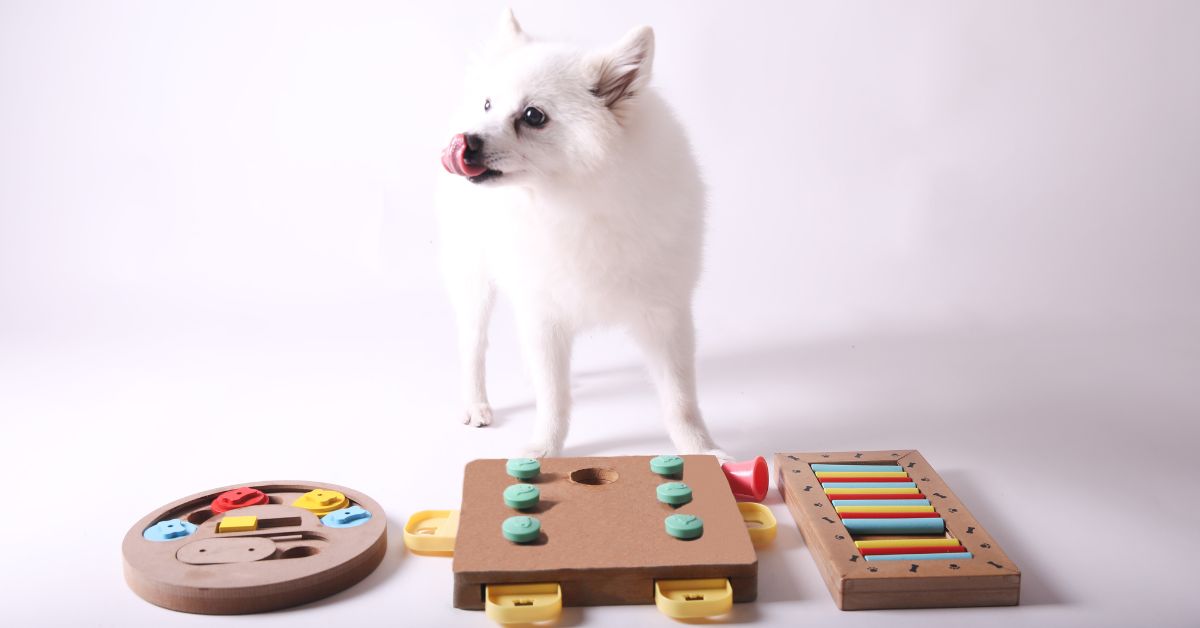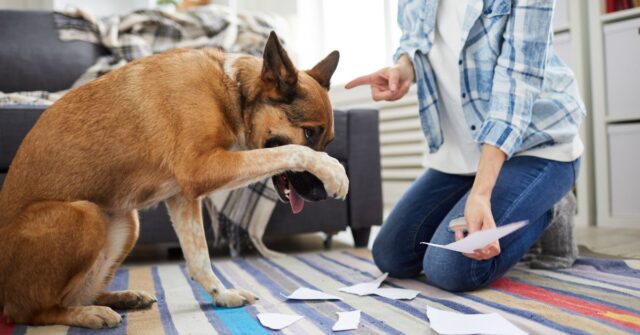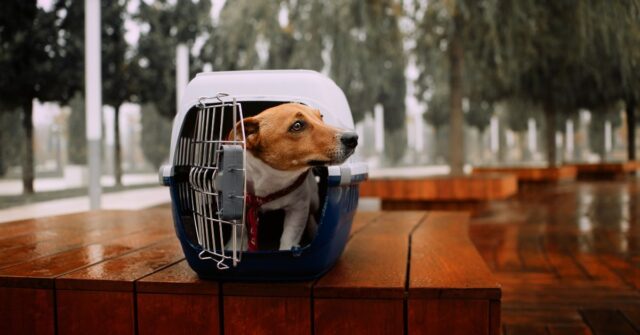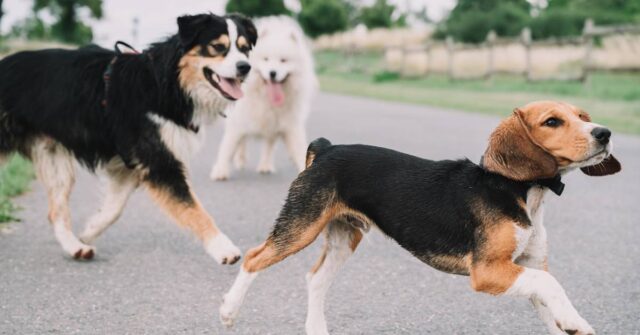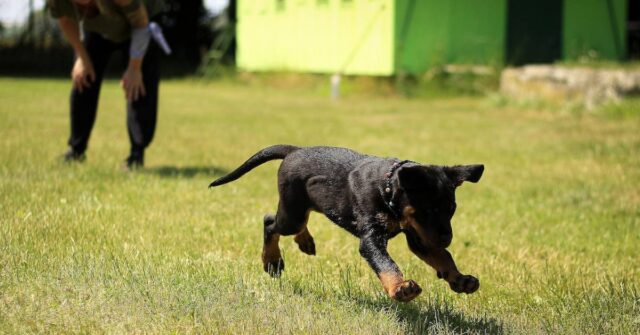Keeping your dog mentally stimulated is crucial for their overall well-being. Dogs, like humans, need mental exercise to stay happy and healthy.
In this guide, we will explore a variety of activities and tips to keep your dog engaged and entertained.
Introduction
Mental stimulation for dogs is as important as physical exercise. It prevents boredom, reduces anxiety, and promotes a healthy, well-rounded life for your furry friend.
Understanding the significance of mental activities can help you provide a richer environment for your dog.
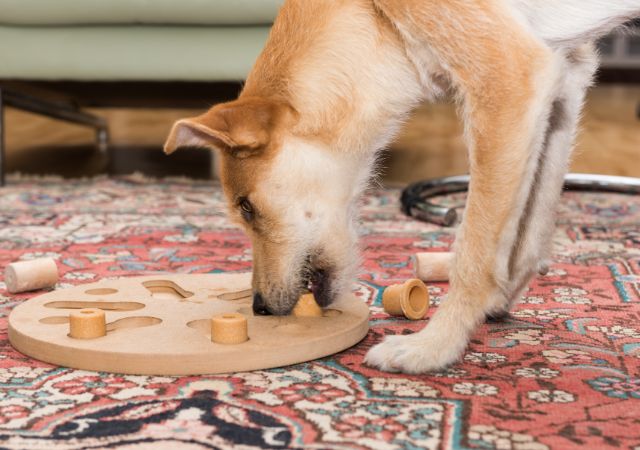

Understanding the Importance of Mental Stimulation for Dogs
Just as humans enjoy puzzles and games, dogs benefit from mental challenges. Engaging their brains helps to keep them sharp, happy, and less likely to develop behavioural issues.
Mental stimulation can be as simple as teaching new tricks or as complex as interactive puzzle toys.
The Dangers of Boredom in Dogs
Boredom in dogs can lead to destructive behaviours, such as chewing on furniture, digging holes, and excessive barking.
These actions are often signs that your dog is not getting enough mental exercise. By providing regular mental stimulation, you can prevent these issues and improve your dog’s quality of life.
How to Use This Guide
This guide offers a comprehensive list of activities and tips to keep your dog mentally stimulated. Each section covers different types of activities, from food-based games to outdoor adventures.
Feel free to mix and match these activities to suit your dog’s preferences and needs.
Food-Based Activities
Using food as a tool for mental stimulation is a great way to keep your dog engaged. These activities turn mealtime into a fun and challenging experience.
Slow Feeders and Snuffle Mats
Slow feeders and snuffle mats are designed to make your dog work for their food. These tools slow down eating and provide mental stimulation as your dog figures out how to access their meal.
They are particularly useful for dogs that eat too quickly.


Large Slow Feeder – Various Sizes & Colours
Enhance your dog’s mealtime with the Outward Hound Fun Feeder. This bowl slows eating by 10X, aiding digestion and reducing bloating. Safe, non-slip, and dishwasher-friendly!
Food Hunts and Scavenger Games
Hide small portions of your dog’s meal around the house or yard and let them sniff out their food.
This activity engages their natural hunting instincts and keeps them busy. It’s an excellent way to make mealtime more exciting.


Stuffed Kongs and Treat Dispensers
Stuffed Kongs and treat dispensers are fantastic tools for keeping your dog occupied. Fill a Kong with peanut butter or wet food and freeze it for a longer-lasting challenge.
Treat dispensers can be filled with kibble or treats, requiring your dog to work for their reward.
DIY Food Dispensers
Get creative with DIY food dispensers. Use items like cardboard boxes, egg cartons, or milk jugs to create simple puzzles. Fill them with treats and let your dog figure out how to get to their reward. This can be a fun and inexpensive way to provide mental stimulation.
Interactive Toys
Interactive toys are designed to challenge your dog’s mind and keep them entertained. These toys come in various forms, from puzzle toys to treat-dispensing balls.
Puzzle Toys
Puzzle toys require your dog to solve problems to get a reward. They come in different levels of difficulty and can keep your dog busy for hours.
Start with simple puzzles and gradually increase the complexity as your dog becomes more adept.


Nina Ottosson Lickin’ Layers Interactive Dog Puzzle
Keep your dog engaged with the Nina Ottosson Interactive Dog Puzzle! This fun, three-layer game fights boredom, improves digestion, and boosts problem-solving skills.
Treat-Dispensing Toys
Treat-dispensing toys release treats as your dog plays with them. These toys are great for keeping your dog occupied and can also help slow down their eating.
Popular options include treat balls and wobble toys.
Sensory Toys
Sensory toys appeal to your dog’s senses of sight, sound, and touch. Toys with different textures, squeakers, or lights can be particularly engaging.
Rotate sensory toys regularly to keep your dog interested.
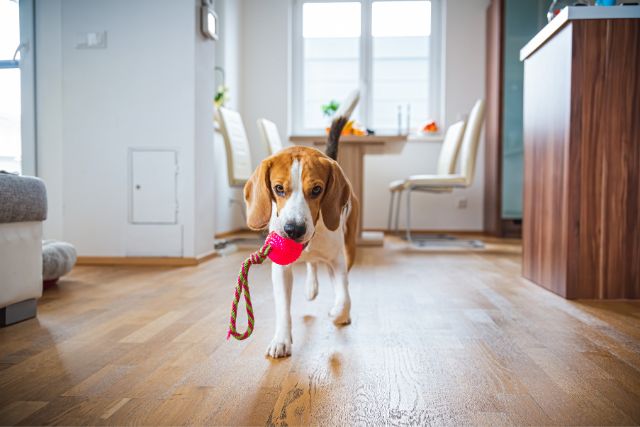

Rotating Toys for Continued Interest
Dogs can get bored with the same toys over time. To keep things fresh, rotate your dog’s toys every few days. This keeps them excited about their playthings and provides new challenges.
Training and Learning
Training sessions are not only great for teaching obedience but also for providing mental stimulation. Dogs love to learn new things, and training can be a fun bonding experience.
Teaching New Commands and Tricks
Teaching your dog new commands and tricks is a fantastic way to engage their mind.
Start with basic commands like sit, stay, and come, and gradually introduce more complex tricks like roll over or play dead. Training sessions should be short and positive to keep your dog motivated.
Games Like Hide-and-Seek
Hide-and-seek is a fun game that stimulates your dog’s mind and strengthens your bond. Hide somewhere in your house and call your dog’s name.
Reward them with a treat when they find you. This game can also be played with toys or treats.
Dog Sports and Agility Training
Dog sports and agility training offer excellent mental and physical exercise. Activities like agility courses, flyball, and obedience competitions challenge your dog in various ways.
Joining a local club can provide structured training and socialization opportunities.
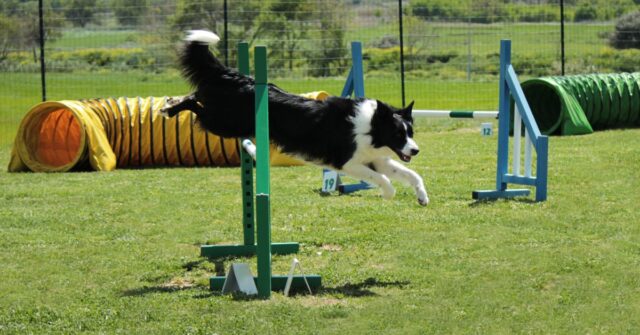

Joining Dog Training Classes
Group training classes are a great way to provide mental stimulation and improve your dog’s social skills. Look for classes that focus on obedience, tricks, or agility.
These classes offer structured learning and can be a fun way to bond with your dog.
Outdoor Activities
Outdoor activities provide a change of scenery and new experiences for your dog. Exploring new environments can be highly stimulating for them.
Exploring New Walking Routes
Take your dog on walks in different locations. Exploring new routes and environments provides a wealth of new smells and sights for your dog.
This can be as simple as walking in a different park or visiting a new part of town.
Setting Up Obstacle Courses
Create a DIY obstacle course in your backyard. Use household items like chairs, boxes, and tunnels to set up challenges for your dog.
Guide them through the course with treats and praise. This activity is both mentally and physically stimulating.
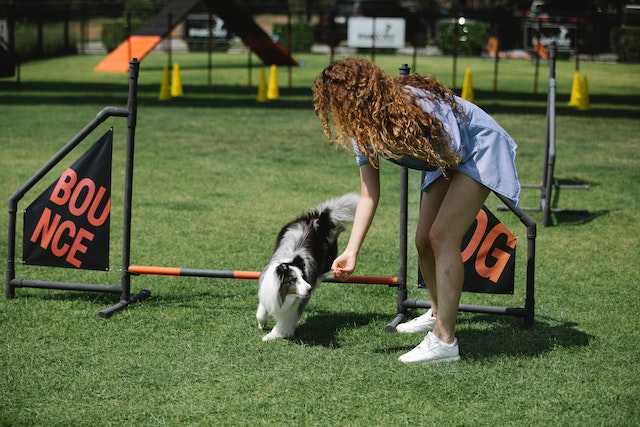

Organizing Playdates and Dog Playgroups
Social interactions with other dogs are great for mental stimulation. Organize playdates with friends’ dogs or join a local dog playgroup.
Supervised playtime allows your dog to learn social skills and burn off energy.
Engaging in Doggie Sports
Enrol your dog in sports like agility, flyball, or scent work. These activities provide structured challenges and are excellent for high-energy dogs.
Dog sports also help build confidence and strengthen your bond with your pet.
Solo Play Options
Sometimes, your dog needs to be entertained while you are not around. Solo play options can keep them occupied and prevent destructive behaviour.
Safe Toys for Unsupervised Play
Choose toys that are safe for your dog to play with when unsupervised. Look for durable toys that do not pose choking hazards. Treat-dispensing toys and robust chew toys are good options for solo play.


Tough Durable Squeaky Dog Chew Toy
Keep your dog entertained and healthy with the SCHITEC Squeaky Dog Chew Toy. Durable, dental-friendly, and irresistibly bacon-flavored for aggressive chewers.
Using Pet Cameras for Remote Interaction
Pet cameras can help you interact with your dog even when you are away. Some cameras allow you to talk to your dog and dispense treats remotely.
This can break up the monotony of being home alone and provide some mental stimulation.
Creating a Dog-Friendly Environment at Home
Make your home a stimulating environment for your dog. Provide plenty of toys, safe areas to explore, and comfortable resting spots.
Rearrange their toys and environment periodically to keep things interesting.
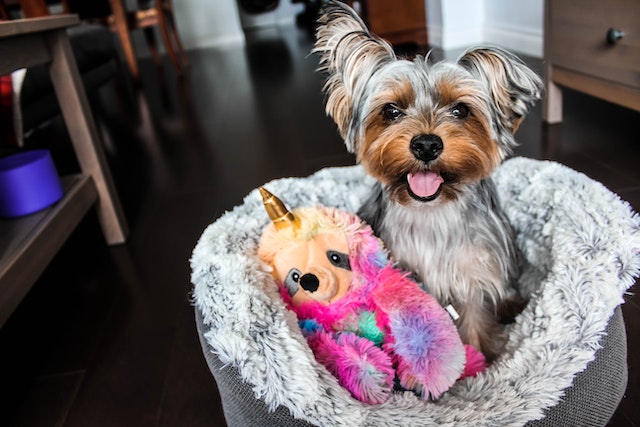

General Tips and Best Practices
Maintaining a balanced routine and understanding your dog’s needs are key to providing effective mental stimulation.
Balancing Playtime, Exercise, and Rest
Ensure your dog gets a healthy mix of playtime, exercise, and rest. Overstimulation can be just as problematic as boredom. Schedule regular activities and downtime to keep your dog happy and healthy.
Being Patient and Consistent
Introducing new activities can take time. Be patient and consistent in your efforts. Positive reinforcement and gradual progression are essential for keeping your dog engaged and motivated.
Creating Comfortable Resting Areas
Provide multiple comfortable resting spots for your dog. Ensure they have cozy beds or blankets in different parts of your home. This helps them feel secure and promotes good rest habits.
Ensuring Safety in All Activities
Safety should always be a priority. Choose appropriate toys and activities for your dog’s size and energy level. Supervise new activities until you are confident they are safe for your dog.
Conclusion
Keeping your dog mentally stimulated is vital for their overall well-being. By incorporating a variety of activities, you can prevent boredom and promote a happy, healthy life for your furry friend.
We hope this guide provides you with plenty of ideas and inspiration.
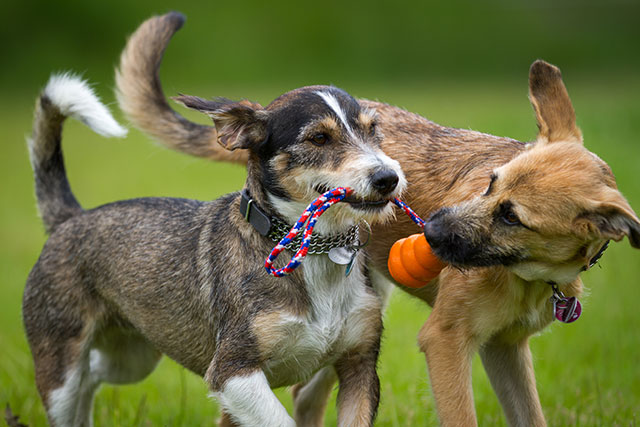

Recap of Key Points
We’ve covered a range of activities to keep your dog mentally stimulated, from food-based games to interactive toys and outdoor adventures.
Regular mental exercise is crucial for preventing boredom and promoting overall well-being. Be sure to mix up the activities and keep things fresh for your dog.

